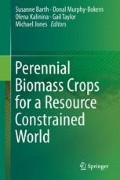Abstract
More and more concrete element producers have recently undertaken efforts to reconsider their global operations by expanding their range of market products to offer innovative, value-added solutions. To achieve this objective, companies aim to develop sustainable composite materials guaranteeing equal or higher performance than existing products; improvement of the environmental footprint; and recycling of waste from manufacturing and products at the end of life.
In the context of a research project of the Laboratory of Solid Structures at the University of Luxembourg, concrete formulations based on Miscanthus aggregates have been investigated and their mechanical and thermal properties analysed. Different mineralization and their effect on the mechanical properties will be presented. By compression versus density and heat conductivity versus density diagrams, a comparison of concrete mixtures based on Miscanthus aggregates and other lightweight mixtures is established. Furthermore, the competitiveness of mixtures based on Miscanthus aggregates will be studied by applying the material properties of the mixtures on already existing innovative masonry blocks on the basis of other type of lightweight aggregates such as for example expanded clay.
Access this chapter
Tax calculation will be finalised at checkout
Purchases are for personal use only
Notes
- 1.
Excerpt from Article 4 of directive 2010/31/EU of the European Parliament and of the council of 19 May 2010 on the energy performance of buildings [1]
References
Achtziger J, Irmschler H.-J (2000) Bestimmung der Rechenwerte der Wärmeleitfähigkeit für Mauerwerk durch Messungen und durch Berechnungen Erschienen in: Mauwerkskalender, Abschnitt D, Teil IV, S. 635 ff
Anton H (1992) Bestimmung des Wärmedurchlasswiderstandes von Außenwänden aus Mauerwerk- Vergleich zwischen experimenteller Untersuchung und Berechnung nach der Finiten Differenzen Methode, Final report, Forschungsinstitut für Wärmeschutz München (FIW), DIBt Az.:IV 1-5-453/85
Brauer N, Heinecke S (2007) Neues Bemessungskonzept und seine Anwendung in der Baupraxis, Bemessung im Mauerwerksbau, Erschienen in: Deutsches-Ingenieurblatt
Dehn F (1998) Particular features on the production of lightweight aggregate concrete (LAC) with open structure. Lacer No. 03, Institut für Massivbau und Baustofftechnologie, University of Leipzig
DIBt-Richtlinie zur Messung der Wärmeleitfähigkeit λ10,tr von Mauersteinproben, Fassung Oktober 2002, Erschienen in: DIBt-Mitteilungen 2/2003
EuroLightCon-Report No. 1; Definition and International Consensus Report EuroLightCon; Economic Design and Construction with Light Weight Aggregate Concrete; Document BE96-3942/R1, April 1998
EuroLightCon-Report No. 2; LWAC Material Properties; State-of-the-Art; EuroLightCon; Economic Design and Construction with Light Weight Aggregate Concrete; Document BE96-3942/R2, December 1998
EuroLightCon-Report No. 8; Properties of lightweight concretes containing Lytag and Liapor, EuroLightCon; Economic Design and Construction with Light Weight Aggregate Concrete; Document BE96-3942/R8, March 2000
European Directive 2010/31/EU of the European Parliament and of the council of 19 May 2010 on the energy performance of buildings
Goltermann P (2008) Load-carrying capacity of lightly reinforced, prefabricated walls of lightweight aggregate concrete with open structure, Materials and Structures, Rilem
Kvande T (2001) Investigations of some Material Properties for Structural Analysis of LECA Masonry, Norwegian University of Science and Technology, Faculty of Civil Engineering, Dissertation
Leufgens N (2010) PhD Thesis Mechanische und thermische Untersuchungen zur Entwicklung eines Wärmedämmsteines aus Leichtbeton. PhD-FSTC-11_2010
Leufgens N, Waldmann D, Maas S, Zürbes A (2007) Development of hybrid-light concrete bricks with improved heat-insulating properties. Third Scottish Conference of Postgraduate Researchers of the Built and Natural Environment, PRoBE 2007, Conference Proceedings, pp. 277–289
Leufgens N, Waldmann D, Maas S, Zürbes A (2009) Thermische und Mechanische Eigenschaftswerte von haufwerksporigen Leichtbetonen (LAC) zur Optimierung von Wärmedämmsteinen, Tagungsband, ibausil -Internationale Baustofftagung, Bauhaus-Universität Weimar
Sagmeister B (1999) Mauersteine- Wärmedämmend mit haufwerksporigen Leichtbeton, Erschienen in: Betonwerk + Fertigteiltechnik, Heft 7, Vol 65, Bauverlag GmbH Wiesbaden, S. 48–55
Spitzner J (1975) Haufwerksporige Leichtbetone aus Blähton; Erschienen in: Beton, Heft 3, S. 92–94
Taurus instruments (2005) GmbH, Benutzerhandbuch, TLP 900 Z, Version Juni 2005
Dahm, Faltz (2015) Bachelor Thesis “Machbarkeitsstudie - Miscanthus”, Bachelor Professional of Engineering, University of Luxembourg, not published
Voß K-U (2009) Target optimization of high thermal insulation lightweight aggregate concrete with open structure. Proceedings of the 53rd BetonTage- Building the Future- Ulm (Vol. 75, S. 112–113). Concrete Plant + Precast Technology
Standards
DIN EN 1946-1, Thermal performance of building products and components—Specific criteria for the assessment of laboratories measuring heat transfer properties—Part 1: Common criteria; German version EN 1946-1:1999
DIN 52612: Tesing of thermal insulating materials; determination of thermal conductivity by means of the guarded hot plate apparatus; conversion of the measured values for building applications
DIN EN 12664:2001, Thermal performance of building materials and products—Determination of thermal resistance by means of guarded hot plate and heat flow meter methods—Dry and moist products with medium and low thermal resistance; Beuth Verlag GmbH, May 2001
DIN EN 196, Methods of testing cement—Part 1: Determination of strength; German version EN 196-1:2005
DIN V 18151;4 Lightweight concrete hollow blocks; Deutsches Institut für Normung e.V., Beuth Verlag Berlin, Oktober 2003
DIN V 18152; Lightweight concrete solid blocks; Deutsches Institut für Normung e.V., Beuth Verlag Berlin, Oktober 2003
Author information
Authors and Affiliations
Corresponding author
Editor information
Editors and Affiliations
Rights and permissions
Copyright information
© 2016 Springer International Publishing Switzerland
About this paper
Cite this paper
Waldmann, D., Thapa, V., Dahm, F., Faltz, C. (2016). Masonry Blocks from Lightweight Concrete on the Basis of Miscanthus as Aggregates. In: Barth, S., Murphy-Bokern, D., Kalinina, O., Taylor, G., Jones, M. (eds) Perennial Biomass Crops for a Resource-Constrained World. Springer, Cham. https://doi.org/10.1007/978-3-319-44530-4_23
Download citation
DOI: https://doi.org/10.1007/978-3-319-44530-4_23
Published:
Publisher Name: Springer, Cham
Print ISBN: 978-3-319-44529-8
Online ISBN: 978-3-319-44530-4
eBook Packages: Biomedical and Life SciencesBiomedical and Life Sciences (R0)

